General
Touch and Travel was a way to pay German public transport using your smart phone. Touch and Travel started in 2008 in Berlin and Potsdam. Later it could be used throughout Germany. Touch and Travel ended on 30 November 2016.
In December 2013 Touch and Travel had 50,000 registered users.
In most areas multiple single fares on one day were capped to the fare of a dayticket.
Usage
Before a traveller could use Touch and Travel, he downloaded an app on his smart phone and became a registered user. The traveller touched in with a smart phone at the beginning of the journey and touched out at the end of the journey. Payment of the journeys was through direct debit after a month or after reaching 100 euros worth of travel.

process flow Touch and Travel ©
There were four ways of touching in or out using a smart phone:
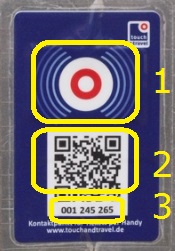
- use near field communication (NFC) at contact point
- scan two-dimensional barcode at contact point
- enter unique number of contact point in app
- use location of smart phone
Equipment
There were various forms of touchpoints. At bus stops a touchpoint was usually only a small sticker.
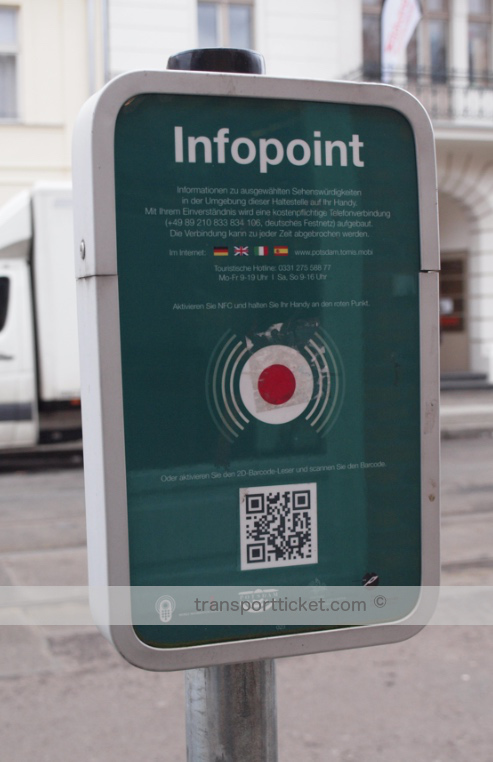
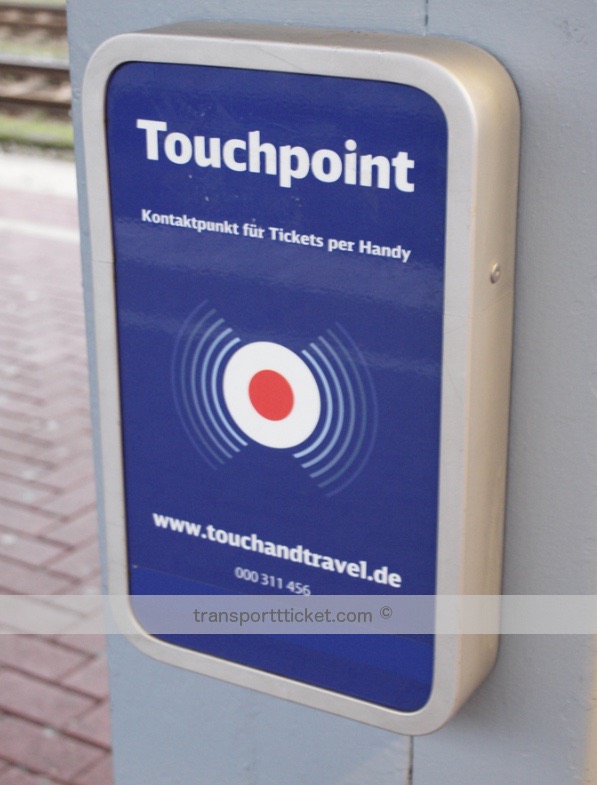
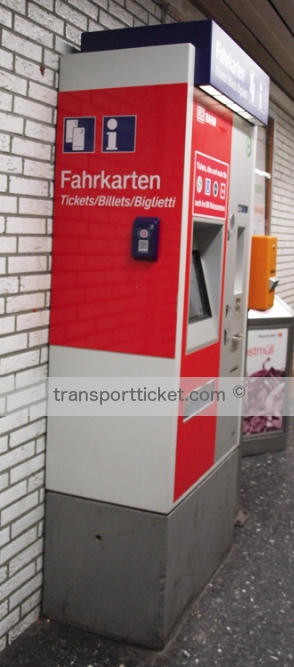
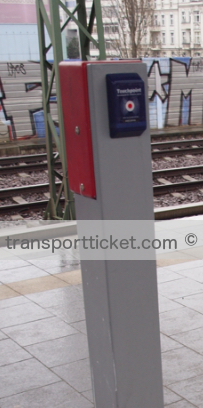
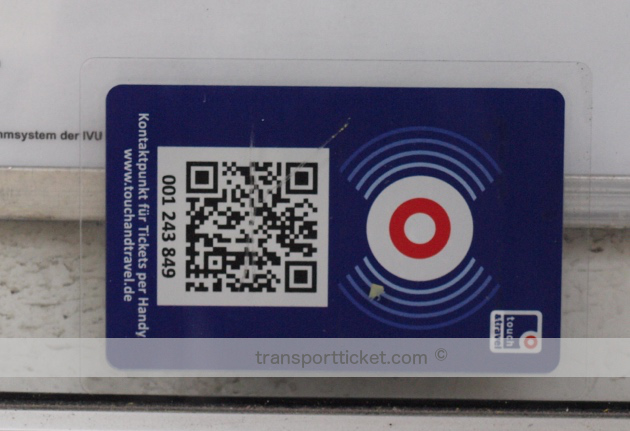
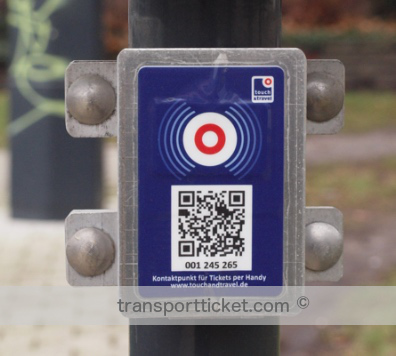
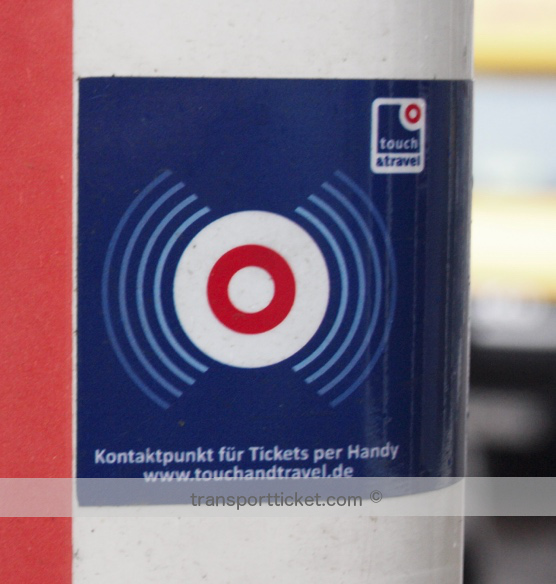
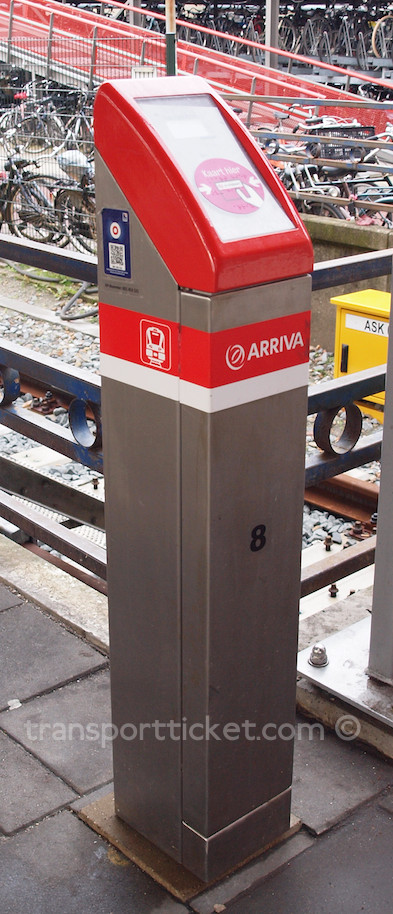
Area of transport
Touch and Travel could be used in:
- all long-distance trains (ICE, IC/EC, CNL/EN) in Germany
- regional trains, trams, metros and buses in several areas in Germany
- international trains (ICE, IC/EC, CNL) to/from Denmark, The Netherlands, Belgium, Italy, Switzerland and Austria. The journey had to start or end in Germany.
| Period | Area / route | Mode | Remarks |
|---|---|---|---|
| February 2008 - August 2008 | route Berlin - Hannover | ICE trains | test with 200 users |
| Berlin | part of S-bahn | ||
| Potsdam | City transport | ||
| December 2008 - ? | route Berlin - Hannover | ICE trains | test with 500 users |
| Berlin | S-bahn and U-bahn | ||
| Potsdam | City transport | ||
| ... | ... | ... | ... |
| December 2011 - now | Rhein-Main-Verkehrsverbund (RMV) | all modes | Frankfurt am Main only |
| regional trains | |||
| December 2012 - now | Rhein-Main-Verkehrsverbund (RMV) | all modes | |
| March 2013 - now | Allgäu, Oberfranken and Ostbayern | regional trains | |
| June 2013 - now | Verkehrsverbund Rhein-Neckar (VRN) | buses, trams, regional trains and S-bahn | |
| Verkehrsverbund Neckar-Alb-Donau (Naldo) | regional trains | ||
| Verkehrsverbund Berlin-Brandenburg (VBB) | all modes | now also Berlin zone C | |
| Heilbronner Verkehrsverbund (HNV) | regional trains and S-bahn | ||
| KreisVerkehr Schwäbisch Hall (KVSH) | regional trains and S-bahn | ||
| October 2013 - now | route Frankfurt - Brussels (Belgium) | IC and ICE trains | |
| route Berlin - Copenhagen/Aarhus (Denmark) | |||
| route Munich - Verona/Bolagna/Venice (Italy) | |||
| December 2013 - now | Donau-Iller-Nachverkehrsverbund (DING) | regional trains and S-bahn | |
| Verkehrsverbund Berlin-Brandenburg (VBB) | all modes | now also outside the Berlin zones A, B and C | |
| June 2014 - now | Verkehrsverbund Neckar-Alb-Donau (Naldo) | buses | |
| Ingolstädter Verkehrsgesellschaft (INVG) | buses | ||
| Rhein-Nahe Nahverkehrsverbund (RNN) | buses and regional trains | ||
| July 2014 - now | Ostalbkreis | regional trains | |
| August 2014 - now | Karlsruher Verkehrsverbund (KVV) | trams | |
| Filsland Mobilitätsverbund (FMV) | buses and regional trains | ||
| October 2014 - now | Regio Verkehrsverbundes Lörrach (RVL) | buses and regional trains | |
| Tarifverbundes Ortenau (TGO) | buses and regional trains | ||
| November 2014 - now | Karlsruher Verkehrsverbund (KVV) | buses | |
| KreisVerkehr Schwäbisch-Hall (KVSH) | buses | ||
| Donau-Iller-Nachverkehrsverbund (DING) | buses and trams | ||
| Waldshuter Tarifverbund (WTV) | buses and regional trains |
From November 2013 untill January 2014 Arriva, a subsidiary of German company Deutsche Bahn, tested Touch and Travel in the North of the Netherlands.